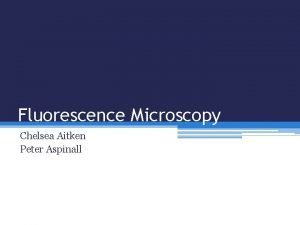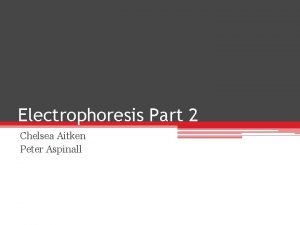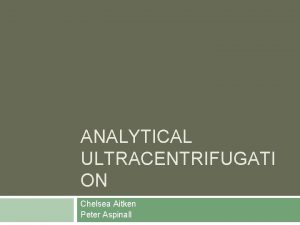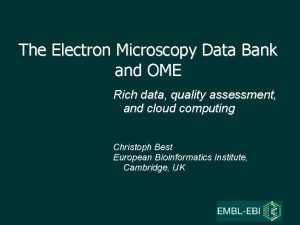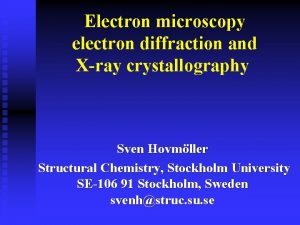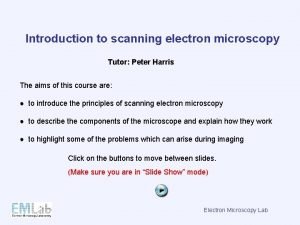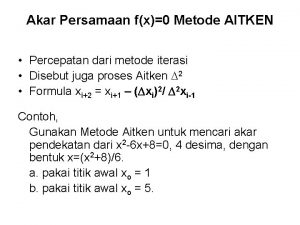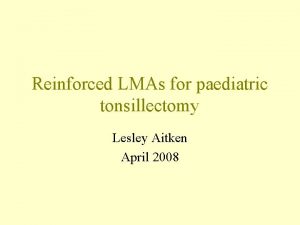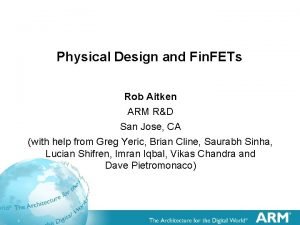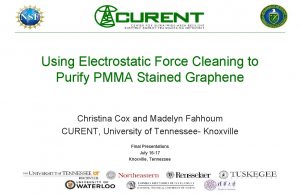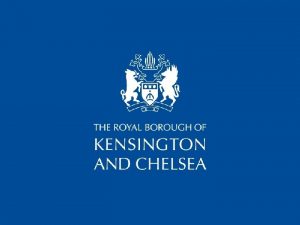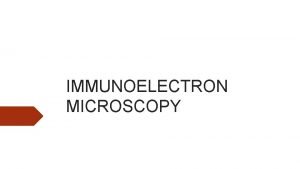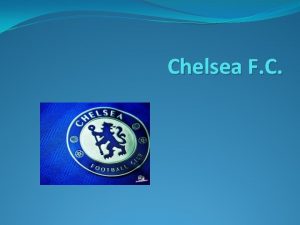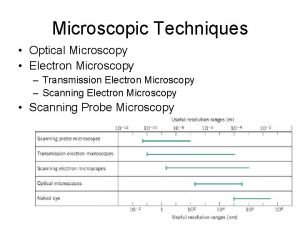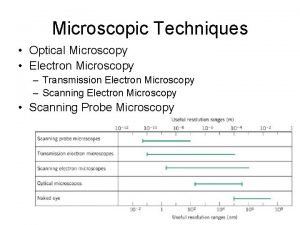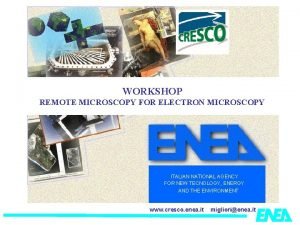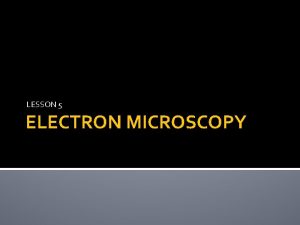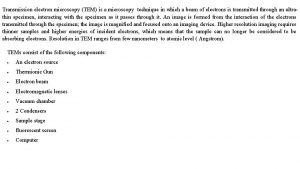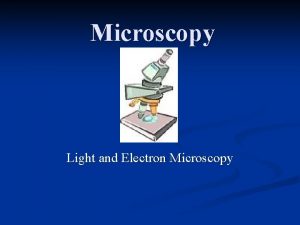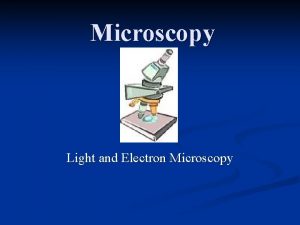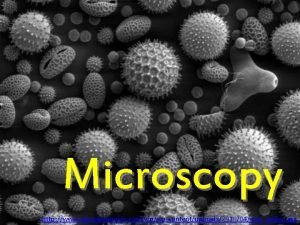Electron Microscopy Chelsea Aitken Peter Aspinall http www

















- Slides: 17

Electron Microscopy Chelsea Aitken Peter Aspinall http: //www. zyvexlabs. com/EIPBNu. G/EIPBN%20 images/05 Ion. jpg

Intro to Electron Microscopy Similar to optical microscopy except with electrons rather than photons Used to image samples with a resolution of 10 Å Can image many different structural geometries Mostly limited by radiation damage from the electron beam

Electron Properties

Electromagnetic Lenses

Signal vs. Noise

Effect of the Microscope on Electron

Electron Generation Thermionic Electron Gun Heated filament produces electrons Field Emission Gun Typically made of Tungsten or Lanthanum hexaboride Electrons drawn towards an anode An aperture in the anode creates a beam A very strong electric field is used to extract electrons from a metal filament Filament typically a single tungsten crystal Requires a vacuum Similar anode setup

Microscope Setup Transmission Electron Microscope Phase contrast Image is formed by the interference between electrons that passed through the sample and ones that did not Scanning Electron Microscope Electron beam is scanned across the sample The reemitted electrons are measured in order to form the image

Focusing When the image is in focus, there is very low contrast due to the electron loss around the objective By imaging underfocus or overfocus, a phase shift and amplitude contrast are created This creates a dark image with a white ring around or a white image with a dark ring (respectively

Negative Staining Biological samples are often imaged using negative staining The elements of biological molecules do not interact strongly with the electron beam Instead they are seated in a material that does and then the negative space of the sample is imaged in this material http: //www. izw-berlin. de/electron-microscopy. html

Cryo-Microscopy Samples are often frozen in order to preserve the structure against radiation damage from the electron beam In order to not damage the structure when freezing, the sample is flash frozen If ice crystals were allowed to form they would damage the sample Samples are typically dunked into liquid ethane or propane (~11 o K)

Image Options EM can magnify a sample between 1000 and 200, 000 times However due to limitations, macromolecules are usually imaged between 40, 000 and 60, 000 for a resolution of 10 – 20 Å Image intensity decreases as magnification goes up with 1/M 2 Protein concentration is typically around 1 mg ml-1 to ensure sufficient particle density without being overcrowded Biological samples can only be exposed to 10 -15 electrons per Å2 Using a stain allows increased exposure Lower temperatures can similarly protect the sample

Data Collection Protocol Search/Focus/Exposure Use low-dose/magnification to find area of interest to magnify Specific defocus is picked and drift is checked Sample is exposed to a high-does to image the sample

Imaging Symmetry When molecules have symmetry or are in helical structures, a two dimensional EM image can be used to reconstruct the 3 D structure This information is often using in conjunction with Xray crystallography in determined the crystal structure of molecules http: //www. newscientist. com/data/images/ns/cms/dn 22545 -1_300. jpg

Electron Tomography Data is collected at multiple tilt angles Typically every 1 o – 2 o over + 70 o Image is then compiled to determine the 3 D structure of the image http: //origin-ars. els-cdn. com/content/image/1 -s 2. 0 S 0301462202003071 -gr 1. jpg

Immunochemical Applications It is very easy to image gold clusters with EM due to gold’s properties Thus the use of gold labeled antibodies is particularly helpful in immunochemistry Labeled antibodies will bind to their antigen EM can then be used to identify the location of antibodies and by extension the antigens http: //www. nano. org. uk/news/image. L 1282120449. jpg

Sources 1. 2. Serdyuk, Igor N. , Nathan R. Zaccai, and Joseph Zaccai. Methods in Molecular Biophysics: Structure, Dynamics, Function. New York: Cambridge University Press, 2007. Print. "Introduction to Electron Microscopes. " Matter. org. uk. University of Liverpool, n. d. Web. 20 Oct 2013. <http: //www. materials. ac. uk/elearning/matter/Intr oduction. To. Electron. Microscopes/SEM/electrongun. html>.
